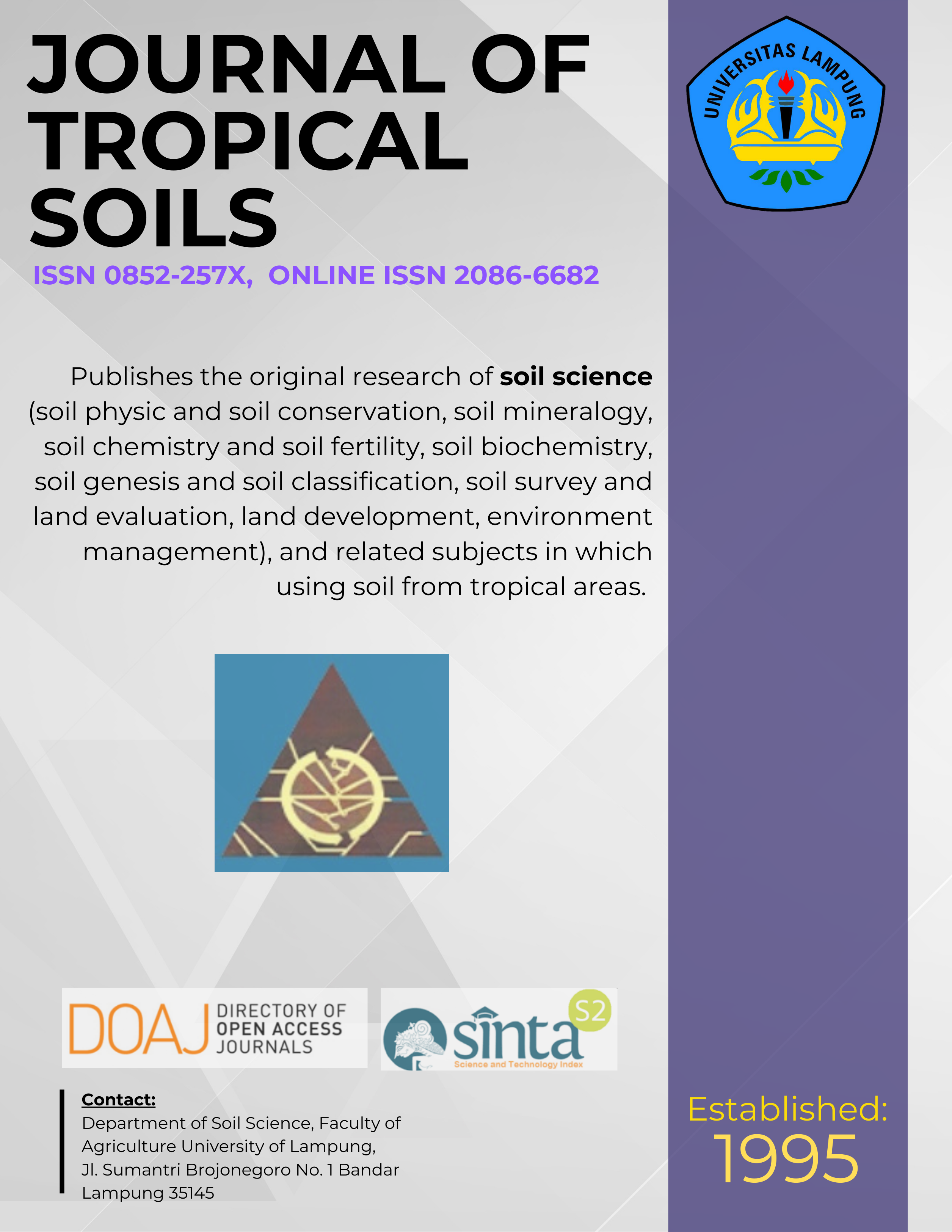Cellulolitic Activities Of Actinomycetes Isolated From Soil Rhizospere of Waigeo, Raja Ampat, West Papua
Main Article Content
Abstract
Seven actinomycetes isolated from Waigeo’s soil rhizospere have been characterized in growth, cellulase activities and pH. These actinomycetes were chosen based on their capabilities in cellulose degradation which were recognized by previous study. Those isolates are belonging to Streptomyces and Actinoplanes genera based on morphological and molecular analyses. The growths of actinomycetes were investigated based on spectrophotometric approach and cellulase activities were conducted based on reduction sugar. Cellulase activities, cell growth, and pH had significant correlation based on statistical analysis. The highest enzyme activities was acquired from  Streptomyces bobili LIPIMC-A-283 (0,519 µmol mL-1 minute-1) at 96 h of incubation. This study provided important basic information on potential cellulolitic alternative from actinomycetes group, as consideration on choosing low-cost technique using microbial agent in cellulose treatment.
Downloads
Download data is not yet available.
Article Details
Section
Articles
License for Authors
Authors who publish with this journal agree to the following terms:
- Authors retain copyright and grant the journal right of first publication with the work simultaneously licensed under a Creative Commons Attribution License that allows others to share the work with an acknowledgement of the work's authorship and initial publication in this journal.
- Authors are able to enter into separate, additional contractual arrangements for the non-exclusive distribution of the journal's published version of the work (e.g., post it to an institutional repository or publish it in a book), with an acknowledgement of its initial publication in this journal.
- Authors are permitted and encouraged to post their work online (e.g., in institutional repositories or on their website) prior to and during the submission process, as it can lead to productive exchanges, as well as earlier and greater citation of published work (See The Effect of Open Access).
License for Regular Users
Other regular users who want to cite, distribute, remix, tweak, and build upon author’s works, even for commercial purposes, should acknowledge the work’s authorship and initial publication in this journal, licensed under a Creative Commons Attribution License.
How to Cite
Cellulolitic Activities Of Actinomycetes Isolated From Soil Rhizospere of Waigeo, Raja Ampat, West Papua. (2009). JOURNAL OF TROPICAL SOILS, 14(3), 239-244. https://doi.org/10.5400/jts.2009.v14i3.239-244

